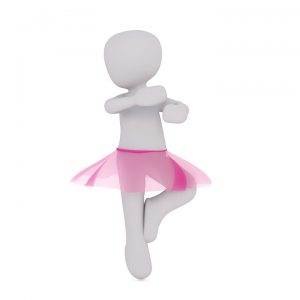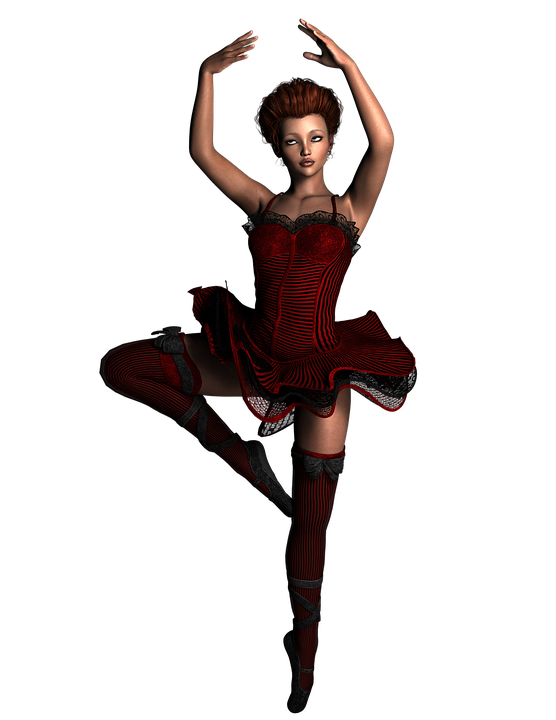 When I think of turns in ballet, I think of the ballerina in a jewelry box turning round and round. You then realize that some of ballet’s enduring magic would be nothing without those impressive turns you see on the stage.
When I think of turns in ballet, I think of the ballerina in a jewelry box turning round and round. You then realize that some of ballet’s enduring magic would be nothing without those impressive turns you see on the stage.
Just like those soaring leaps, turns are what the audience loves to see, and if a ballerina can master that impossible and breathtaking thirty-two fouette turns in Swan Lake, she knows that she has accomplished something that few dancers in the world will ever achieve.
Who Invented Fouettes Turns?
The creator of these turns was Pierina Legnani, who was an early adopter of blocked pointe shoes, and the first to do the famous thirty-two fouettes in Swan Lake.
Since then the modern-day ballerinas have even gone as far as to add double and even triple fouettes into their sequences, making for a truly breathtaking display.
Male dancers don’t do fouettes, because they are more impressive en pointe. But the men do very impressive looking multiple turns a la seconde.
When the female dancers do their fouettes, the male dancers will normally come out, not to be outdone, and perform a series of turns and jumps circling the stage. The faster the better.
You very seldom see more than one ballerina performing fouette turns at a time, as it is so difficult to get them to turn in unison. The corps normally do single or double pirouettes.
Turns in the Movies
Jumps can lose their impressiveness on film but turns always look great. Think of those ten pirouettes that Mikhail Baryshnikov does in White Nights.
In The Red Shoes, Moira Shearer shows the turns from the ballerina’s point of view as she looks out on the audience.
In Torn Curtain, there is suspense as the hero tries to hide in the audience but is spotted by the communist bad girl ballerina played by Tamara Toumanova, who stares at him repeatedly with each of her turns.
Different Types of Turns in Ballet
Turns are either done en dehors (outwards) or en dedans (inwards), however, there are many different types of turns in ballet.
They can be quick and delicate or huge, bold, and sweeping.
One can turn by spinning on one leg, turn by changing legs, turn by leaping and turning in the air. The types of turns are many.
In modern dance, there are turns on heels and heads, but in ballet, most turns are performed with the weight on the front of the foot. There are too many different types of turns to mention, but these are the most common turns in ballet.
Pirouette
A pirouette is a turn in place on one leg. The preparation can be from fifth, fourth, or second. Some pirouettes show a straight back leg, others bent in attitude and others the foot is on or above the knee.
Fouette Rond De Jambe en Tournant
These turns in ballet are normally known as fouette turns as discussed above. The term means ‘whipped rond de jambe while turning.’
There is normally a simple pirouette or pas de bourree en tournant en dedans as a preparation, then the working leg moves to a front extension as you plie, then whips out to a side extension and back into retire as you rise. The whipping action propels you around each time you repeat it.
These turns can be done on the spot or traveling, although sometimes the traveling isn’t planned.
Fouette turns can be done en dedans too but these are so difficult to do that they are rarely seen.
Pique Turns
These turns in ballet are also known as pricked turns. They are done traveling on one leg. The dancer steps onto the straight leg keeping it straight at all times.
Chainé Turns
These are quick traveling turns using both legs. The dancer steps from one leg to another while turning half a turn on each step. As these turns are always in the same direction, with each step, the dancer alternates the half turns en dedans and en dehors.
Soutenu en Tournant
This is short for assemble soutenu en tournant. It is a full turn in fifth position in which the feet change position as you turn.
Tips For Turns In Ballet

Here are some tips that may help you to become a better turner. Remember a pirouette is not a spin, but a controlled up-and-down movement that happens to rotate.
- If battling to get your balance, the arms could be throwing you off. Put your hands on your hips or shoulders to get them out of the way. Removing your arms from the equation also lets you focus on other things like spotting and snatching.
- If your chainés are slow, you might not be ringing the second side of your back around fast enough. Step with your second foot on the first count of the phrase. Pull around so that you are already facing the back corner by that point. this gets the body spiraling quickly and makes the sequence feel like a series of turns rather than a series of steps.
- When doing chainés don’t let your feet separate too much or you will lose control. Focus on maintaining tension between your inner thighs. Your legs should feel like they are connected as much as possible.
- You need tension in your torso, which will pull you up and keep you from traveling too far with each step in your chainés.
- Feel like energy is coming out of the top of your head and imagine your body making a spiral shape that moves upwards and outwards on your chainés turns.
- The way you hold your arms can affect the feel of your chainés and your pirouettes. Feel like your arms are pushing down as you go up.
- Work on the preparation phase, are the shoulders and hips centred over the feet? Is there too much force or poor spotting? Tighten up your demi plie and your turns and jumps will improve. Make sure you have an even weight distribution between both legs.
- Practice moving from the prep to the turn position without the actual turn to practice finding your center of balance. (If you execute proper body alignment, you will find your center for turns).
- You need to practice getting the right amount of push and just the necessary amount of force.
- While turning make sure you keep your hips stacked under your shoulders and there should be no curve in your spine. This will ensure better balance.
- Align your ribs over your pelvis and keep this connection throughout the turn. Not only do the ribs stack over the pelvis, but the ribs should knit together and connect closer to the hips bones (this will help you to not fall backward.)
- Keep your pelvis locked squarely over the supporting foot. when you do a turn from fourth, make sure that you don’t tilt your pelvis and pull back from your turning foot.
- Keep your rotator muscles engaged throughout the turn.
- Toes should push the floor, the eyes spot and the arms always close.
- Visualize yourself hugging a beach ball with your arms. This helps to activate your arm and back muscles.
- Point the retire foot and imagine you are bringing the retire/passe leg higher as your turn. This will also keep your center up and balanced.
- Make sure your foot stays connected to your leg.
- Keep your supporting leg straight or in the case of a bent supporting leg (as in modern) really bend and don’t sickle your feet. Sickling means that you are letting your ankle ‘slouch.
- Visualize your knee drawing a circle around as you pirouette.
- Just before the finish, lift, activating the core muscles just a little bit more for a graceful landing.
So when doing turns in ballet, it is a lot to think about and remember, but the more you practice, the better you are going to get and eventually, your muscle memory will take over and you won’t need to think so hard about all of these things anymore.
For more tips on pirouettes and some exercises to help you along the way, read this article.

